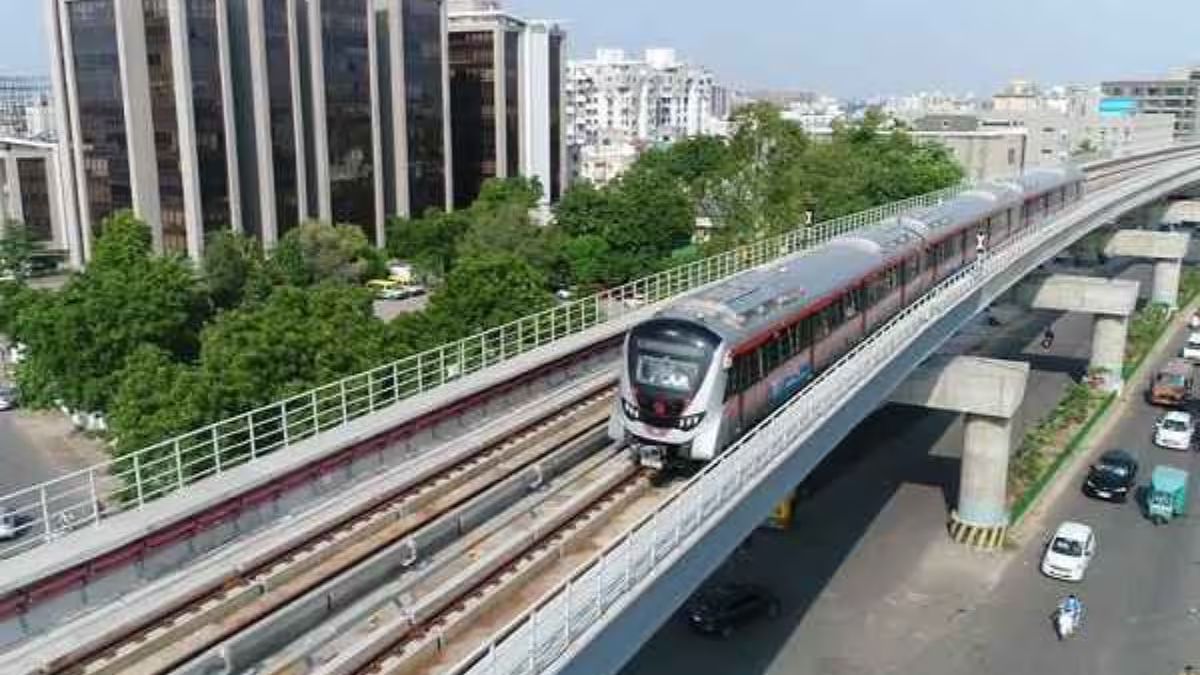Ahmedabad-GIFT City Metro Link Boosts Connectivity and Urban Mobility
In a significant development for urban mobility in Gujarat, the Gujarat Metro Rail Corporation (GMRC) has announced the launch of direct metro connectivity from Ahmedabad to Gandhinagar’s Sector-1 and GIFT City, eliminating the need for passengers to switch trains at Motera Stadium or Gujarat National Law University (GNLU). Starting February 15, commuters travelling from Ahmedabad’s APMC station will be able to reach their destinations in Gandhinagar without interruptions, enhancing convenience for thousands of daily travellers.
The move is expected to be a game-changer for professionals working in Gandhinagar’s key business districts, including the internationally renowned GIFT City, which has positioned itself as India’s first operational smart city and a global financial hub. Until now, passengers had to change trains at Motera while travelling to Gandhinagar or at GNLU when heading to GIFT City, often leading to extended travel times. With six direct trains operating between APMC-Motera-GNLU-GIFT City in both directions and 14 direct services connecting APMC to Sector-1, GMRC is set to redefine intercity connectivity between Ahmedabad and Gandhinagar.
Urban Infrastructure Growth: A Step Towards a Smarter Future
This enhanced metro service is a testament to Gujarat’s commitment to strengthening public transport infrastructure as urbanisation accelerates. According to GMRC, the increased frequency of metro trains will provide much-needed relief to daily commuters, ensuring faster, smoother, and more reliable transport options. Moreover, the inclusion of feeder bus services between GNLU Metro Station and GIFT City, running every 30 minutes with a stop at Pandit Deendayal Energy University (PDEU), further integrates last-mile connectivity into the transport network.
The new metro services align with Gujarat’s larger vision of developing Ahmedabad and Gandhinagar as interconnected economic corridors. With 15 direct services also operating on the reverse route from Sector-1 to Ahmedabad, the initiative is expected to facilitate more seamless business exchanges, encourage real estate growth in Gandhinagar, and boost employment opportunities in both cities. By improving accessibility to GIFT City, the metro expansion strengthens Gujarat’s positioning as an emerging global financial hub, further attracting domestic and international investments.
Sustainability Impact: A Greener, Smarter Transport Solution
This metro expansion marks a step towards reducing Ahmedabad-Gandhinagar’s carbon footprint by encouraging public transport use over private vehicles. Studies indicate that metro rail systems emit 80% less carbon dioxide per passenger kilometre compared to conventional road transport. By providing an efficient and eco-friendly alternative, the direct metro link is expected to reduce vehicular congestion on the Ahmedabad-Gandhinagar highway, leading to lower emissions and better air quality.
Additionally, the Gujarat government’s continued investment in sustainable urban transit projects aligns with India’s goal of achieving net-zero emissions by 2070. By integrating electric buses and non-motorised transport options with metro services, the state is creating a multimodal transport ecosystem that prioritises environmental conservation while fostering economic growth.
Civic and Urban Impact: A Model for Future Smart Cities
The new metro connectivity enhances not only convenience but also the overall quality of urban life. With improved intercity travel, professionals, students, and business owners can now benefit from reduced travel times, cost-effective commuting, and enhanced real estate prospects in Gandhinagar. As more residents opt for metro services, civic authorities can reallocate road space to pedestrian-friendly zones and green corridors, promoting a healthier urban environment.
Looking ahead, this development sets a precedent for other Indian cities aiming to integrate metro systems into their urban planning frameworks. As Ahmedabad and Gandhinagar continue to expand, such forward-thinking initiatives will play a crucial role in shaping them into sustainable, smart urban centres that cater to modern mobility needs while preserving environmental integrity.




